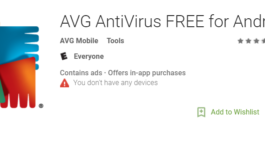CymaBay Therapeutics Inc (NASDAQ:CBAY) shares were up 10.18% on Monday when approximately 631,033.00 shares were traded, against the average daily trading volume of 534,468.00. Analysts at Credit Agricole recently upgraded the stock to Underperform from Buy. CymaBay Therapeutics Inc (NASDAQ:CBAY) has a consensus Strong buy rating, according to Zacks Investment Research. No analyst has rated the stock with a sell rating, 1 has assigned a hold rating, Zero says it’s a buy, and 2 have assigned a strong buy rating to the company.
Analysts have a consensus target price of $6.75 in the 12-month period. The price objective is 266.85% higher than the recent closing price of $1.84. The 52-week price range is $0.82-$3.04 and the company has a market capitalization of $43.18M.
CymaBay Therapeutics Inc (CBAY) on January 5, 2017 announced that it has successfully concluded its scientific advice discussions with the European Medicines Agency (EMA) on the Phase 3 development program for arhalofenate. Arhalofenate is a novel dual-acting product candidate for the treatment of gout that both lowers serum uric acid (sUA) and reduces gout flares. It is the first compound in a new class of gout therapy that the CymaBay refers to as Urate Lowering Anti-Flare Therapy (ULAFT). CymaBay licensed rights to arhalofenate in the U.S. to Kowa Pharmaceuticals America, Inc. but retains rights to develop and commercialize arhalofenate outside the U.S.
CymaBay reached agreement with the EMA on all of the key elements of the planned Phase 3 program which is very similar to that agreed upon with the Food and Drug Administration (FDA) last year. It will include two pivotal studies of arhalofenate in combination with febuxostat (40 mg) in patients with chronic gout and a third study in combination with febuxostat (80 mg) in subjects with tophaceous gout, a more advanced form of the disease.
Agreement was reached on the efficacy endpoints for the two separate clinical actions of arhalofenate. The sUA lowering will be assessed as responder rates for patients achieving the targets of <6 and <5 mg/dL for chronic and tophaceous gout, respectively. The data could support an indication for the management of hyperuricemia associated with gout in combination with febuxostat in these two patient populations. Flare data will be collected with an electronic diary and assessed using the same flare definition successfully used in the Phase 2 program. These data could support an indication for flare prophylaxis. In total, these studies will enroll approximately 1300 patients intended to receive treatment for at least 6 months. Approximately half of these patients will receive arhalofenate and will enter into an extension phase for an additional 6 months to collect safety information.
The lowest dose at which febuxostat (Adenuric) is approved in Europe is 80 mg. In order to provide information on the relative effectiveness of the combination of arhalofenate and febuxostat (40 mg), a fourth study in subjects with chronic gout will be conducted comparing flare rate of this combination with that of febuxostat (80 mg) alone. The duration of this study would be 6 months and will enroll approximately 150 subjects.



